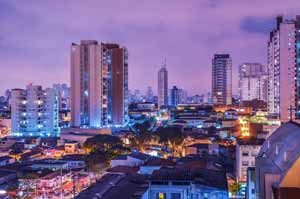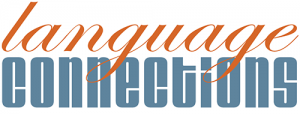Already a leader in biofuels and agriculture, Brazil is poised to emerge as a leader in the life sciences industry as well. Driven by the nation’s highly skilled scientific base, a growing middle class, and a growing and aging population, the South American giant is only a few steps away from global dominance in the life sciences. Favorable market factors, especially greater market privatization, have created a Brazilian life science industry on course to compete internationally.
The Brazilian Life Science Industry: A New Frontier
These characteristics make Brazil an ideal frontier for new and established firms in the industry. Brazil’s increasingly global ties in every sector, especially in the life sciences, provide growth opportunities for domestic and international firms.
As the country’s life science industry increases collaboration with foreign firms, professional translation services, especially life science translation services, become a critical part of the industry’s successful growth.
The Brazilian Life Science Industry: Access to Natural Resources

Brazil also has high amounts of natural petroleum reserves, mineral ores, and marine life assets.
These resources bode well for the Brazilian life science industry, and it is expected that research and development, especially for pharmaceutical firms, will be facilitated by access to the Amazon’s rich environment.
As the life sciences sector continues to deal with more competitive pressure, it will be important for firms to distinguish themselves through continuous innovations, generating patented products, and cutting development costs.
Partnerships: The Key To Unlocking Brazil’s Research Potential
Such innovations and cost reductions can only come from expansive research strategies that include easy, exclusive access to natural and biological assets. Brazil’s environment can satisfy these requirements.
As current Brazilian law stands, however, access to these resources will require extensive collaboration with Brazilian life science industry firms, research institutions, and the government.

In fact, permission to access these resources for molecular-level research must be requested from the government by a Brazilian partner. Thus, collaboration with Brazilian institutes is not simply a matter of choice, but a federally mandated process.
To meet these ends, partnerships between Brazilian and international organizations will be necessary.
It should be noted that, with increased global partnerships, reliance on scientific translations that are technically and culturally accurate will follow.
International Collaboration
While collaborations with Brazilian life science firms and institutes may seem like barriers and impediments, they can actually prove to be strategic in offsetting growing cost and efficiency pressures in the industry.
Established firms in traditional markets, the US, EU, and Japan, must find ways to partner with Brazilian life science industry leaders to remain solvent and competitive.
On the other hand, Brazilian life science firms need capital and know-how, which established firms can provide.
Mergers and acquisitions, like that of Sanofi-Aventis’ purchase of Medley pharmaceuticals, will be critical for gaining access to emerging markets and establishing technical support as well as cost and risk sharing measures for Brazilian firms.
Collaboration Hindered Without Translation
To facilitate the inevitable collaboration between Brazilian life science industry players and foreign partners, professional translation services company must be consulted.
Life science translation services can handle both the regulatory requirements of the Brazilian government and the technical and scientific translations that must occur to maintain an efficient collaborative effort.
The Brazilian Life Science Industry: Government Support

The government recognizes that without considerable investments in infrastructure and technology capable of taking advantage of its natural resources, those assets will turn into lost opportunities.
Operating under this understanding, the government has tried to cultivate an environment that both trains its scientific base for key science and technology areas and allows businesses in the industry to thrive.
Increasing the Funding for Academia
The government has allocated billions of dollars to support science and technology research and education. The most successful plan has been the federal government’s Research, Innovation and Dissemination centers.
These academic centers, primarily located in Sao Paulo State, are aimed at providing interdisciplinary knowledge and training in the sciences. Since 2000, the government has committed R$8.5 billion to the program, with Sao Paulo State alone announcing a roughly R$2.2 billion funding increase to be invested over the next few years.
The government’s previous and current investments are paying dividends. Over 40% of all scientific publications in Latin America are Brazilian.
Brazil is now ranked an impressive 13th in the number of indexed scientific articles (by the SJR). The number of Brazilian articles published in international scientific journals has, from the available data between 1980 to 2008, grown at a yearly rate of 11.3%.
All-the-while its private business in the sector have gained larger and larger market share.
Language Behind Scientific Research Sharing
As the trend continues in this direction, translation services in academia and research must be increased to ensure global access to publications. This includes document translations such as journal articles and other scientific texts.
Translation for clinical trials will also play an important role as Brazilian institutions perform studies abroad and foreign institutions do the same in Brazil.
Trade Agreements

These trade deals allow life science products and technology to be readily sold, tariff-free, across the continent. Thus with agreements such as LAFTA, access to the Brazilian market is a gateway to the entirety of South America.
As markets open in neighboring countries with distinct language needs, Argentina and Ecuador for example, translation and localization support will need to be acquired.
Regulatory Compliance Documents, Technical Manuals, and Packaging and Labeling, will need translation and localization as firms enter these new markets.
The Brazilian Life Science Industry: Market Size
The Brazilian life science market currently represents 40% percent of the demand in Latin America.
Domestic firms are performing well as the pharmaceutical industry alone is worth 35 billion dollars, with a decade long growth rate of 12% between 2005 and 2015.

The country’s growing middle-class will only create greater demand for the industry as whole. As the middle-class grows so does the country’s life expectancy, creating a string of opportunities for life science firms.
The income growth creates a viable market for life science products while higher life expectancy creates the greater, longer-term demand for the industry. In the past decade alone the country has added 40 million new members to its middle class, making the number of Brazilians with an income of $11,500-$29,000 just over 100 million.
With a middle class this size, the country’s economy and life sciences industry in particular is projected to grow encouragingly. The market’s size continues to grow, especially in pharmaceuticals, generics, biologics, and biotech.
The Brazilian Life Science Industry: Areas for Improvement
Though opportunities abound, the industry still faces several key issues. These center mainly on the fact that Brazil’s private life sciences sector lacks funding, adequate patent protection, and a truly open market.

Investment spending should be higher than current levels given that Brazil’s scientific infrastructure is not quite as developed as that of the countries it aims to compete with. To remain competitive, the country must continue its upward trend in science and technology investments.
Brazil also suffers in the institutional structure of its science and technology sector. Scientists and researchers are highly concentrated in universities and have limited interaction and impact on the industry. This institutional disconnect can lead to low innovative output of the domestic market.
Additionally, the government continues to exercise an excessive level of price controls in the market. Patent protection must also increase in order to secure the high risks and costs of life science research and business activity.
The Brazilian Life Science Industry: The Importance of Translation
The Brazilian life science industry is on course to becoming a hot spot for scientific innovation in the coming years. To help firms form relationships with Brazilian life science companies, and to remain complaint with Brazilian law, professional translation will be needed.
Translation, cultural adaptation, and localization will be required for documents such as:
- Scientific texts
- Patient recruitment materials
- Chemistry manufacture and control documents
- Patents and legal materials
- Business correspondence, as well as documents pertaining to mergers and acquisitions
- A host of clinical research documents not mentioned above
Language Connections can assist in providing precise, legally and regulatory compliant translations of Brazilian and global life science documents. Interpreters to support verbal communication between Brazilian-based and Foreign-based partners are also available.
To learn more visit our Life Science Translation services!
Written By: Godfroid Niyobuhungiro, Marketing Intern at Language Connections
Sources for Understanding the Brazilian Life Science Industry:
- http://www.pharmexec.com/innovation-and-market-growth-brazil-1
- http://www.elsiproject.eu/fileadmin/user_upload/elsi/brosch%C3%BCren/DD/Overview_of_Life_Sciences_in_Brazil_-_Scottish_Enterprise_-_11_2012.pdfÂ
- http://www.biopartner.co.uk/documents/Estudo_PwC_Biominas_EN_11.pdfÂ
- http://www.scielo.br/scielo.php?pid=S1676-06032005000100002&script=sci_arttext&tlng=en
- https://www.researchgate.net/publication/295093299_The_Brazilian_Life_Science_Industry_Advances_and_Challenges
- http://www.investopedia.com/articles/investing/011916/high-growth-potential-brazils-pharma-market.asp
- https://home.kpmg.com/xx/en/home/insights/2017/09/brazils-privatization-drive-should-attract-investors.html
- https://naturalsciences.ch/organisations/biodiversity/abs/overview/glossary
- http://www.scienceforbrazil.com/sao-paulo-to-invest-us680-million-in-long-term-research/
About Language Connections:
Language Connections is one of the top language service companies in the US. Over the last 30 years, we’ve focused on providing the best business translation services, interpreting services, as well as interpreter training and customized language training programs. In addition to top-tier corporate language training, we offer certified corporate interpreters and professional business translation services in 200+ languages. Our network includes linguists with backgrounds in all major industries. They’re ready to meet your needs, whether they’re for technical translation services, legal translation, government translation services, international development translation services, education translation services, life sciences translation, or something else. Reach out to us today for a free quote on our cost-efficient and timely translation services, interpreters, or other linguistic services.
Language Connections Inc.
2001 Beacon Street, Suite 105,
Boston, MA 02135
Phone: +1-617-731-3510
Email: service@languageconnections.com


